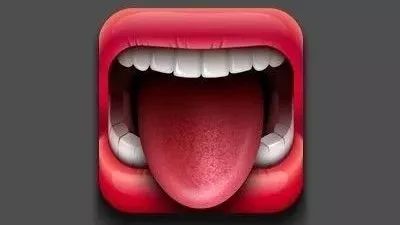Please indicate the author and source from the “Pharmacy People” WeChat public account (yaodianren520)
Tongue diagnosis is a common diagnostic method in Traditional Chinese Medicine (TCM). It is not only simple and easy to perform but also objectively and accurately reflects the condition of the patient, serving as an important basis for understanding the development and changes of diseases.However, tongue diagnosis requires strict clinical experience from practitioners, which limits its use among many pharmacy personnel.
As an important component of the “Four Examinations” in TCM, tongue diagnosis can accurately reflect five important pieces of information about diseases, providing great assistance for subsequent treatment.Today, I will explore the “mysteries” of this information with all of you!
1. Differentiating Between Excess and Deficiency
First, let’s take a look at a normal tongue appearance:
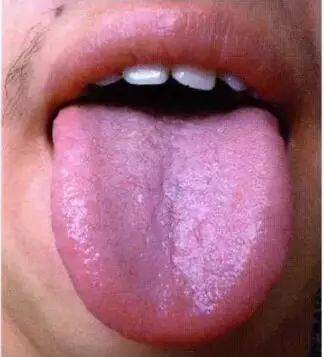
The tongue body is light red, soft, flexible, with a thin white coating that is moist.
Comparing the normal tongue appearance with pathological tongue appearances, the differences are very obvious:
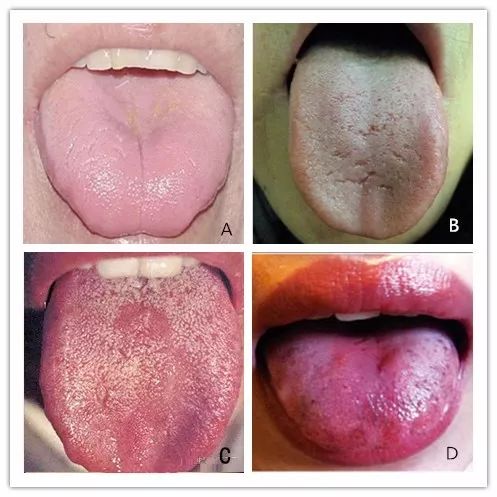
A. Pale white tongue color → Qi and blood deficiency
B. Dry tongue with a rough coating → Fluid damage
C. No root or bare coating on the tongue → Stomach Qi deficiency
D. Tongue color purple or spotted, or engorged sublingual veins → Blood stasis
2. Differentiating the Nature of Pathogenic Factors
Different types of pathogenic factors exhibit significant differences in tongue appearance, such as:
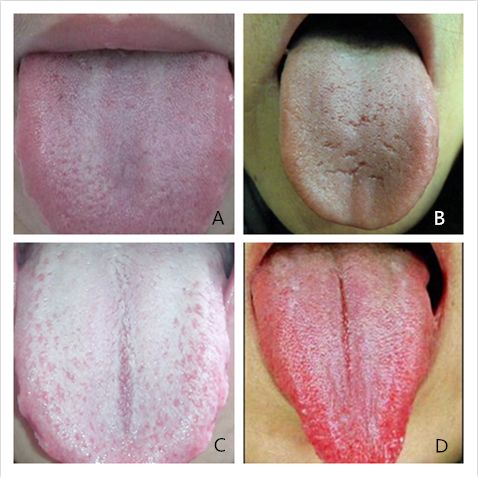
A. Exterior wind-cold → Thin white coating
B. Exterior wind-heat → Thin yellow or dry coating
C. Dampness, phlegm, food stagnation, or exterior turbid qi → Thick greasy coating
D. Dryness as a pathogenic factor → Red tongue with little fluid
3. Differentiating Disease Location and Depth
In fact, every change in tongue appearance corresponds to specific areas of the body. Let’s take a look at the following diagram:
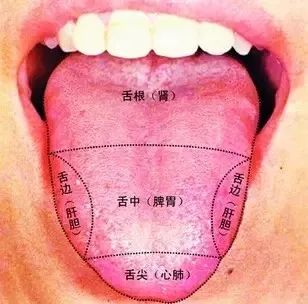
Manifestations of organ diseases on the tongue
By comparing the above diagram, we can find that changes in different positions of the tongue correspond to imbalances in different organs, allowing us to determine the disease location:
-
Red tip of the tongue with prickles → Excess heart fire
-
Red sides of the tongue → Liver and gallbladder heat
-
White thick greasy coating on the tongue → Spleen dysfunction, dampness obstructing
-
Yellow thick greasy coating in the middle of the tongue → Spleen and stomach damp-heat
Additionally, the tongue coating is also an important basis for reflecting the depth of the disease. Generally speaking, the deeper the pathogenic factor penetrates, the more pronounced the changes in tongue appearance.
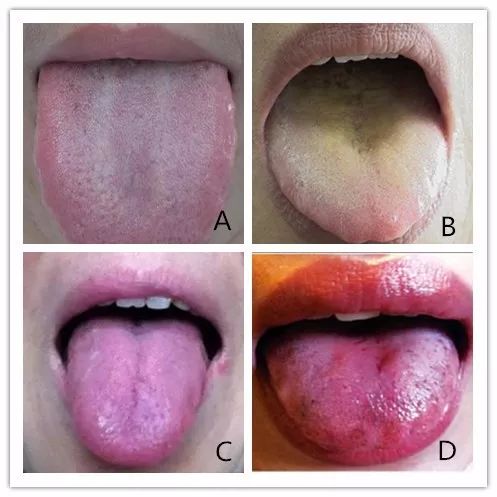
A. Thin white coating → Disease onset, mild condition
B. Yellow thick coating, red tongue body indicates pathogenic factors have penetrated → Heat in the Qi level
C. Pathogenic factors entering the Ying level → Deep red tongue
D. Pathogenic factors entering the blood level → Deep red or purple tongue body, little or no coating
4. Inferring the Progression of the Disease
It is important to note that tongue appearance changes with the progression of the disease. Therefore, observing changes in tongue appearance can help infer the development of the disease, such as when pathogenic factors move from the exterior to the interior, the following changes can be observed:
-
Coating color: from white to yellow, from yellow to gray-black.
-
Coating quality: from thin to thick, from moist to dry.
Conversely, this indicates that the pathogenic factors are gradually retreating, fluids are being replenished, and the condition is improving. However, special attention should be paid to the following situations:
-
Sudden increase or decrease in tongue coating → Often caused by rapid changes in the condition
-
Sudden thickening of thin coating → Indicates rapid penetration of pathogenic qi
-
Sudden disappearance of thick coating on the entire tongue → Indicates excess pathogenic factors and deficiency of righteous qi, sudden loss of stomach qi
5. Estimating Prognosis
Tongue appearance is also an important indicator reflecting the prognosis of disease progression. For example, a tongue that is rosy and has spirit, with a normal coating and appearance, indicates that the pathogenic factors are not strong and the righteous qi is not damaged, suggesting a better prognosis; conversely, a tongue that is dull and lifeless, with no root coating and abnormal appearance, indicates deficiency of righteous qi and decline of stomach qi, suggesting a more dangerous condition.
TCM believes that the tongue is a mirror of human organs, and many internal changes can be reflected through the tongue. However, pharmacy personnel need to observe more, summarize accurately, distinguish different tongue appearances, and familiarize themselves with the meanings and treatment methods of different tongue appearances to provide accurate guidance for patients’ subsequent medication and lifestyle recommendations.
(This article is for professional reference only)

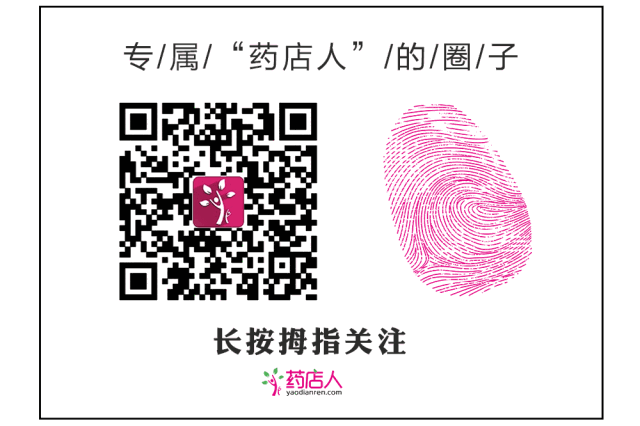
Send #精品# to the Pharmacy People public account
Many excellent articles for you to read

